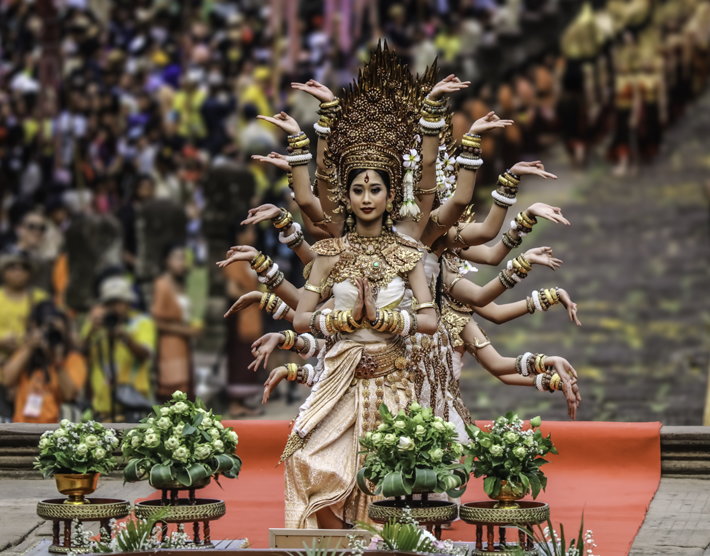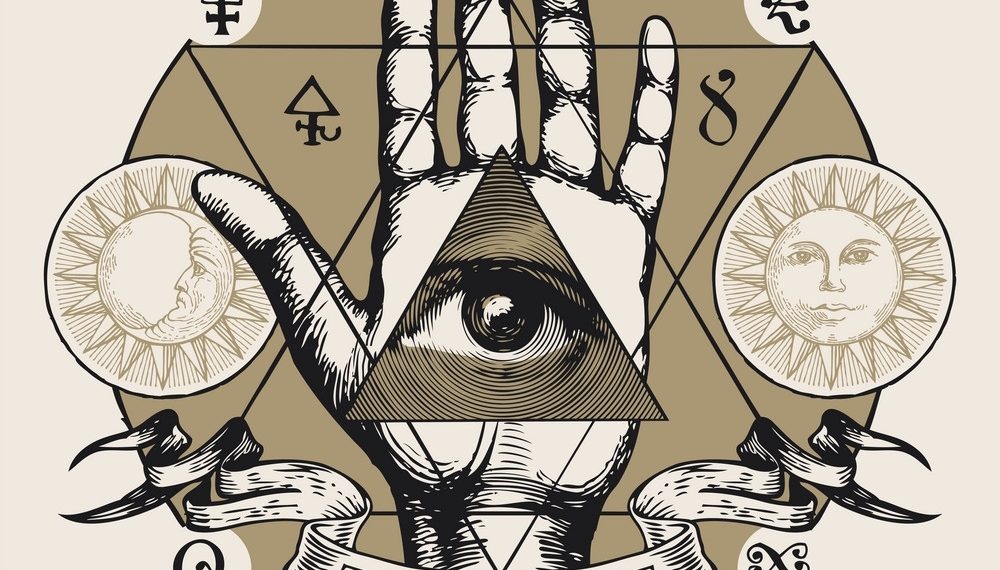What keeps a religion alive and vibrant in times of uncertainty and change? How does a faith stay relevant to its community beyond demanding adherence to its core beliefs?

At the end of June and beginning of July, the Smithsonian in Washington, D.C., explored and displayed the abundant creativity and lived experience that spring from the traditions of the spiritual communities of, among others, Buddhists, Christians, Hindus, Jews, Muslims, Native Americans, Pacific Islanders, Sikhs and African-descended religions.
The Smithsonian’s Creative Encounters: Living Religions in the U.S. Festival on the National Mall offered a feast for the spiritual and physical senses, focusing on five themes: Sound Religion, Body and Spirit, Makers of Faith, Kitchen Theology and Futurisms.
Sound Religion covered the spiritual dimensions of a faith’s rhythms and music. Some rituals—such as those of African-descended religions and Buddhist chants—involve drumbeats and staccato rhythms respectively. Others, such as Christianity, Islam and Judaism, are marked by harmonies in choir hymns or in the melodic recitations of the Qur’an and the Torah.
“When we’re praying, it’s kind of like we’re awakening ourselves,” Bhanoo Sharma, president of the Hindu Temple of Greater Chicago, explained as a bell rang intermittently from their booth at the festival. “The bell is almost a rhythmic chant while we’re singing. It helps, in a way, keep time as well. It’s also almost as if we are feeling like we are awakening God to listen to our prayer, symbolically.”
The Body and Spirit theme of the festival explores the movement of the body in communicating to and with the divine. Dancing conveys not just every emotion from deepest despair to sublime joy, but can also tell stories and engage in memory and experience, using the body as the vessel and two-way communication channel between worshipper and the Worshipped.
The third theme, Makers of Faith, marks another way that, as program curator Michelle Banks says, will give the public a chance to “pull back the curtain” on little-known spiritual practices in American communities. Spirituality can be expressed through the fashioning of images and artwork by the faithful. A New Mexico artisan, Nicolás Otero, makes carvings of saints in one booth. “The earth is provided for us, so the paints come from the earth; the wood that we carve comes from the earth, given to us from a greater power, the creator,” said Otero, whose forebears are indigenous, Hispanic and Catholic.
In another booth, visitors are told to “think of your ancestors” as they fashion flowers out of multi-colored tissue paper as offerings for the indigenous holiday Dia de los Muertos, Day of the Dead. One visitor, Bob Wicks of Oxford, Ohio, comments, “For me the most important thing is that these are traditions that are infused with meaning and have religious significance—more spiritual significance—within the community. That really helps provide a sense of unity.”
The most hands-on booths are those featuring Kitchen Theology. Elena Terry, a traditional Ho-Chunk woman from Wisconsin Dells, Wisconsin, prepares ancestral-inspired dishes that “celebrate the beauty of corn.” She says, “I want to be able to educate people about our life and our connection to food, the land, to each other and what that means as a Native woman in today’s world. I would like them to understand that we are still here, we do still live our religion daily.”
Futurisms, the final theme, may be the most key for faith communities. The Smithsonian describes it as, “an invitation to reframe faith-based futures by considering the changing landscape of religious, spiritual, and ethical practice in the United States.” A challenge for all religions in the 21st century is to remain relevant and involved while grappling with the dizzying technological, environmental and social change that is our world. Hence the need for creative and out-of-the-box solutions that reach back to ancient traditions while framed in a contemporary synthesis of the sacred and relevant. The Smithsonian, through its Creative Encounters: Living Religions in the U.S. Festival did its part.
_______________
From its beginnings, the Church of Scientology has recognized that freedom of religion is a fundamental human right. In a world where conflicts are often traceable to intolerance of others’ religious beliefs and practices, the Church has, for more than 50 years, made the preservation of religious liberty an overriding concern.
The Church publishes this blog to help create a better understanding of the freedom of religion and belief and provide news on religious freedom and issues affecting this freedom around the world.
The Founder of the Scientology religion is L. Ron Hubbard and Mr. David Miscavige is the religion’s ecclesiastical leader.
For more information, visit the Scientology website or Scientology Network.
DOWNLOAD THE WHITEPAPER

